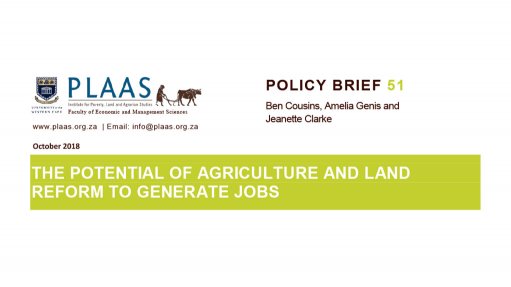
Extremely high levels of unemployment contribute to poverty and inequality, and are one of South Africa’s most intractable problems. Can the agricultural sector help to address the problem? And how can land reform be undertaken in a manner that creates more jobs?
The farming sector, together with forestry and fisheries, currently contributes around 2% to GDP and around 5% to total employment, with a total of 840 000 workers. The contribution of agriculture to GDP is in fact somewhat greater than 2%, given the contributions of input (‘upstream’) suppliers and agro-processing (‘downstream’) industries. Around 30 000 medium- to large-scale commercial farmers supply the bulk of produce to formal markets, and employ most farm workers.
Perhaps 5 000 of such medium- to large-scale commercial farmers are black, but most black farmers operate on a much smaller scale. They are either subsistence-oriented (around 2 million) or market-oriented smallholders (around 200 000) and operate informally.
The number of workers employed in agriculture increased by around 200 000 between 2011 and 2018. The long-term trend in commercial agriculture, however, is towards increased job shedding as a result of investments in efficiency and mechanisation, and a shift to a higher proportion of temporary, casual and seasonal labour, as well as externally contracted labour.
Paper by UWC's Institute for Poverty, Land and Agrarian Studies